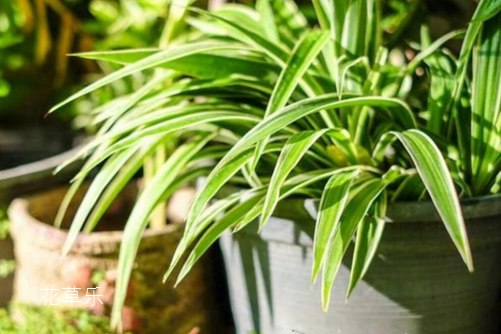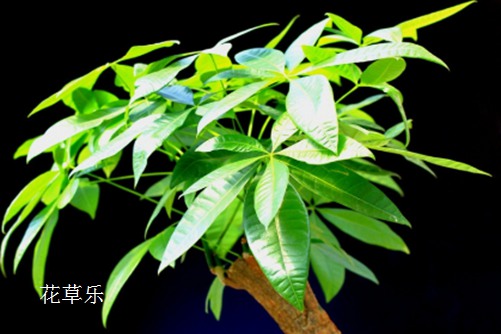You don't love her by doing this: the disease prevention rules, causes and control methods of diseases and insect pests of Cymbidium
Chlorophytum, also known as sarmentosa, hanging orchid, fishing orchid, orchid, folding crane orchid, air guardian, native to Africa. It is the bar handle of the indoor green plant world, and has the reputation of "green purifier". It is easier to maintain, but also can not avoid the invasion of pests and diseases. If the disease and insect pests cannot be prevented, the growth of spider orchid will be affected, and the ornamental value of spider orchid will be greatly affected. Sometimes the reason why it comes on is that your nursing is improper. You don't love her like this. Next, Huahuale will introduce you to the occurrence rules, causes and control methods of spider plant diseases and insect pests!
You don't love her by doing this: prevention rules, causes and control methods of spider plant diseases and insect pests

1. Root rot
Rule: Generally, it is more common in spider seedlings, and less in adult plants. Early symptoms are not obvious, but as the root rot intensifies, the leaves begin to wither. If the condition is more serious, it may be all gone overnight.
Causes of disease: soil is too wet, poor ventilation conditions; roots suffer from diseases and insect pests, germs invade plants; insufficient light; low temperature, large temperature difference between day and night, etc.
Control methods: disinfection of seeds and soil before sowing; when the disease occurs, root irrigation with 40% root putrescence, once a week, until good.
II. White silk disease
Rule: The diseased part is located at the rhizome near the ground of the plant. Early purple brown spots, late gradually spread to petiole, causing petiole rot, and the disease site has white hyphae.
Cause: high temperature and humidity; soil ponding; poor ventilation conditions.
Control methods: moderate watering, reasonable fertilization, planting not too deep. During the disease stage, the potted plants are disinfected by sprinkling lime powder around them 2-3 times a month; in the later stage, when the disease is severe, the roots are irrigated with thiophanate-methyl solution.
III. Stem rot
Rule: disease often occurs in old plants. Stems turn brown, leaves lose luster, droop constantly, and finally the whole plant gradually dies. Once this disease occurs, it is difficult to deal with it, and prevention should be the main focus.
Cause: Soil and air moisture; long-term storage in the shade.
Control methods: before the season of high incidence of germs, try not to divide plants, do not turn pots, reduce leaf wounds; in the season of high incidence of germs, reduce watering frequency, keep the soil relatively dry, and give sufficient light and moisture. And it should be sterilized regularly with drugs.
IV. Anthrax
Law: mainly damage to leaves. At the beginning of the disease, there will be many yellow-brown slightly sunken dots, and the dots will gradually become larger in the later stage. With the appearance of small spots, leaves quickly withered, and when serious, the whole plant died.
Cause: sultry and humid environment, poor ventilation; soil ponding, planting too dense; leaves due to damage and by bacteria erosion.
Prevention and control methods: ensure good ventilation conditions, find sick plants removed in time, to clean up. Spray leaves with Bordeaux mixture to sterilize. Watering timely to avoid excessive soil moisture. Appropriate fertilization, increase phosphorus and potassium fertilizer.
V. Pests
Chlorophytum vulnerable to insects are nematodes, aphids, beetles, insect pests belong to bacterial infection, we should attach great importance to.
Rule: It is easy to be born in young plants and mature plants, young plants have poor resistance, mature plants are also infected by cuts due to transplanting and other reasons.
Control methods: strengthen water and fertilizer management at ordinary times to enhance the resistance of plants. Once the disease occurs, in the early stage of the disease, there are few insects, which can be removed manually or washed with water, but do not damage the leaves; in severe cases, pesticides can be used to kill pests, 1-3 times a month, and the spider plant will recover in a month. If the disease is very serious, eradicate it in time so as not to affect other healthy plants.
reviewed
Flower-raising friends must pay attention to it, and must raise it according to the habits of the plant. If it likes moisture, put it in a humid environment; if it is drought-tolerant, don't water it often. Everything has its law of growth, must not violate the laws of nature, otherwise you will bring disaster to it.
Time: 2019-04-24 Click:
- Prev

Make a fortune tree common diseases and insect pests prevention and control tips, you do not hurry to collect!
Is your fortune tree easy to raise? When I talked with some flower friends before, we all talked about this topic. Many friends say that the rich tree is not easy to raise, and the tree suddenly gets sick. All of a sudden, they don't know what to do? In fact, the editor has something to say, it is not that it is difficult to raise a rich tree.
- Next

Seedling raising techniques of Acer truncatum
Seedling raising techniques of Acer truncatum
Related
- Fuxing push coffee new agricultural production and marketing class: lack of small-scale processing plants
- Jujube rice field leisure farm deep ploughing Yilan for five years to create a space for organic food and play
- Nongyu Farm-A trial of organic papaya for brave women with advanced technology
- Four points for attention in the prevention and control of diseases and insect pests of edible fungi
- How to add nutrient solution to Edible Fungi
- Is there any good way to control edible fungus mites?
- Open Inoculation Technology of Edible Fungi
- Is there any clever way to use fertilizer for edible fungus in winter?
- What agents are used to kill the pathogens of edible fungi in the mushroom shed?
- Rapid drying of Edible Fungi

